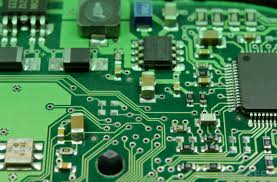FR4 PCB is the most popular PCB material especially in the electronics industry. While its overwhelming properties make it the go-to PCB, it comes with a fair share of challenges that might compromise its use in a harsher environment. It is important for engineers and designers today to work within these constraints.
Challenges with High-Speed Applications
An important problem with FR4 PCBs is their use in high-frequency applications. The result is a dielectric constant of FR4 that can occasionally rise north of 4.0-4.5, leading to signal integrity issues at frequencies beyond 1 GHz. This introduces phase delays and signal loss, which is especially problematic for telecommunications or high speed digital applications.
Thermal Conductivity Concerns
Though FR4 can pass heat through fairly well its thermal conductivity is low, generally in the realm of 0.3 W/mK. As long as the low thermal conductivity of FR-4 is low, it is not a viable option for high-power applications where cooking heat is absorbed. Over time, this can lead to delamination (separation of the layers of the PCB) and in worst case, a failed board.

Moisture Absorption
There is a risk of moisture adsorption of FR4 materials, which could result in a degradation of the mechanical and electrical properties. FR4 can absorb up to 0.2% of its weight in water when it is subjected to humid environments. This absorption can result in swelling that affects dimensional stability and drive degradation in electrical performance, most notably insulation resistance.
Mechanical characteristics and thickness constraints
Although FR4 is considered as having superior mechanical strength, there are limitations to its use especially in the case when thin PCBs are being demanded. Even when used in flexible applications, FR4 can still be a bit on the stiff side and is prone to cracking, either from use or from handling. Moreover, the FR4 available in standard thicknesses may not satisfy ultra-thin devices, further reducing the range of application in state-of-the-art wearable devices.
Chemical Sensitivity
One of the main disadvantages of FR4 is its susceptibility to many chemicals including strong acids and bases as they will affect its structural integrity. In harsh, chemical-exposed environments like some industrial capacities, it can result in the material to weaken and breakdown quickly, which can ruin the expected lifetime and functionality of FR4 PCBs.
Engineers understand these challenges and will often seek alternatives such as high-frequency laminates or flexible substrates that are better suited to some applications. Still, the benefits of FR4 PCB outweigh these drawbacks for many applications which is why it remains the go-to material in the PCB world.